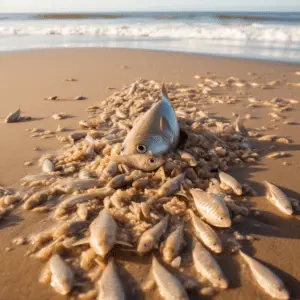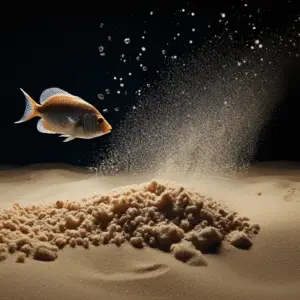Everyone likes the beach. Sinking your feet in warm sand and watching the sun set over the lake is the best feeling. Seaside getaways are popular because there is no experience like the peacefulness of being by the water. The beach conjures up escape and a lack of stress from your busy job life. In fact, any holiday or getaway marketing will mention beach access. Air BnBs near beaches cost extra because we adore them.
As humans, we have the habit of gossiping and spreading little fun facts. Whether they are true or not is up to debate. This gossip even expands to the world of beach living, among rumors about the number of calories burned while scuba diving and the creatures that lurk under the water, it is also widely spread that the sand that you know and love is actually nothing more than fish poop.
Now, we don’t want to put you off relaxing by the beach for life, but we think this is something that we need to delve into and discuss out of our own curiosity. So, is sand fish-poop?
The Parrot Fish

Sand is fish excrement, which may not be what you expected to hear. Do not worry—this is not all sand. All those beautiful white beaches you’ve seen in images or seen are made of excrement. The basic Parrotfish explains how beaches become overrun with fish feces.
The parrotfish diet is distinct from other fish. Instead of algae and other fish, parrot fish adore coral. Though they may damage their teeth, parrotfish have evolved powerful teeth that can smash even the toughest material. This is why they enjoy eating not only coral but also any rock-like substance.
Like every animal, parrotfish must digest their food, which changes the coral and rock they eat. The coral and rock they eat during the day form thin grains of white sand that washes up on shore and builds beaches.
This may offend you, but remember that you are not standing in fish waste. You’re standing on digested coral. Look for parrotfish when using the best underwater scooters when scuba diving to determine if the beach you’re on is comprised of fish excrement.
Is all sand Fish-Poop
Now, you may be put off beaches for life and you may be on the verge of canceling the beach getaway that you have been planning for the last two years. However, you don’t have to worry. As I previously stated, it is the white sand that you should be looking out for, as that could be the poop of a parrotfish. However, not all sand or even white sand is fish poop as there are other ways that sand is formed.
As I have previously stated, the way in which parrotfish produce sand is through granulating rock and coral. Now, it would be hard to believe that the only way that these things become sand is through passing through a fish. Aside from passing through a fish, several other natural processes can make coral and rock become sand
As you may be aware, water pressure can actually be quite intense and powerful. Because of this, more often than not, little pieces of rock will be knocked off naturally occurring rock groups. As it travels through the water’s tides, this rock will be granulated due to the pressure and will become grains of sand that contribute to the formation of beaches.
If you ever studied the rock cycle in school, you will also be aware that rocks naturally erode over time. That doesn’t mean they just decrease in size and the rock that breaks away from the bigger rock needs to become something. These rocks that erode from bigger bodies or even mountains will travel downstream into the ocean and become grains of sand that wash up onto the shore and form beaches.
Why are beaches different colors

You may wonder why fish poop only occurs on white beaches and how other beaches get the color they have. This all depends on how the sand is formed and the minerals that it comes into contact with.
Tan sand
The most common sand that you will see on a beach and the color you are probably most familiar with is tan sand. Thankfully, this is not produced as a product of fish poo and is in fact this color because it was naturally quartz that oxidized with iron.
One of the rarer colors of sand that you may be aware of is black sand. Again, this is not produced by poop and is in fact created in quite a cool way. Black sand is actually eroded volcanic material.
